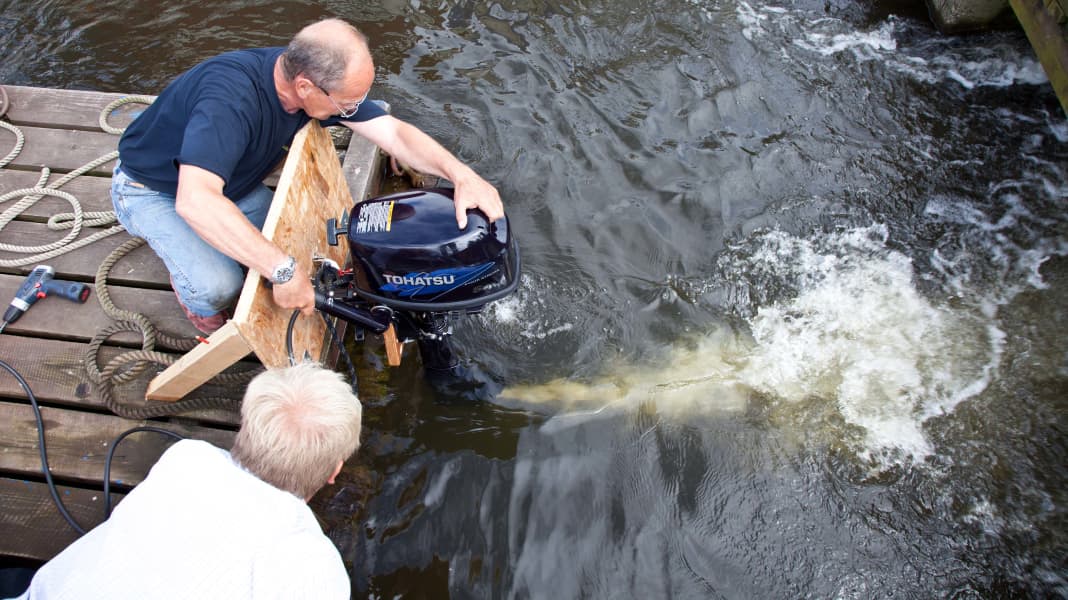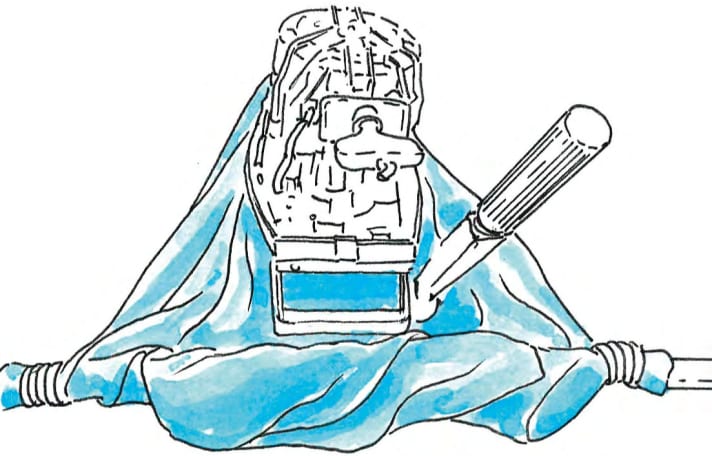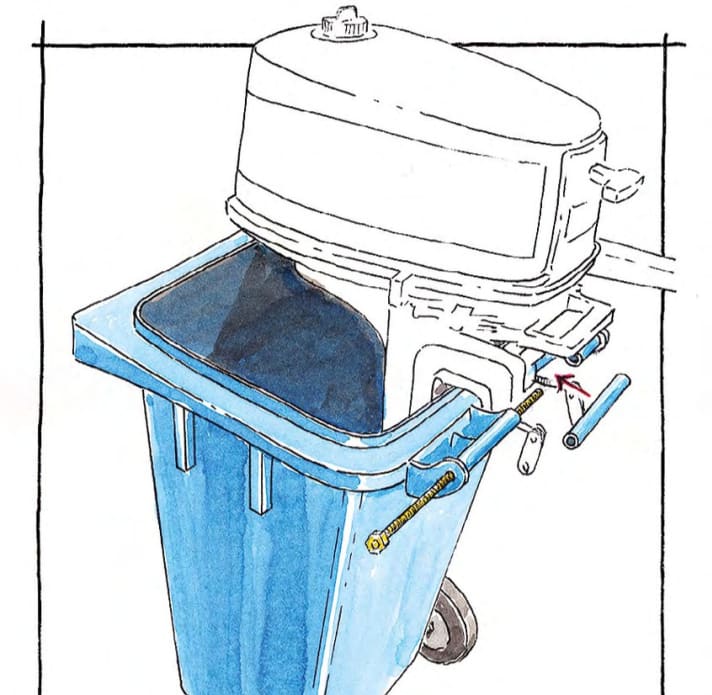
Outboard lifehack 1:Kitchen apron helps when screwing the engine

If the outboard motor won't start with the best will in the world, the carburettor is one of the usual suspects. The fuel has evaporated, especially after long periods of standstill in winter, and the sticky residue hinders the function. The only solution is to remove and clean it. To do this, the lines and the throttle cable must be removed and a few screws loosened. Ideally, this work should be carried out in the workshop at home, but this is not always possible. There is a risk of individual parts falling into the water when working on the mirror. We prevent this with a special collecting device: a kitchen apron. The lower hem is placed around the engine shaft and the two ends are knotted together. The bib is placed over the pushpit and tied with the straps that are normally around the hips. The makeshift device reliably catches screws or tools before they fall into the water. It has often saved us from a dive. The water is still very cold, especially at the start of the season.
Horst Ehrle, Friedrichshafen
Outboard lifehack 2:Carry outboard motor with recovery strap

As soon as the outboard motor for the dinghy produces more than the usual 2 to 3 hp on the propeller, the transport over the stern down into the dinghy becomes a feat of strength. In addition, the larger the engine, the more difficult it becomes to handle. Although the accessories trade offers special carrying straps for this purpose, a halter-like line attached to the engine is also sufficient. It is even easier if you attach the snap hooks of the lifebelt to the front and rear of the motor.
Achim Weckler, Hattersheim
Outboard lifehack 3: Protect motor with champagne cork

Our outboard motor has a fin under the propeller. This is quite pointed and also very exposed. When landing on the beach, it quickly drags through the sand, which can cause unsightly scratches. On the other hand, it can also cause damage to the deck if the engine is briefly set down. The simple solution: the lower part of a champagne cork. The plastic is very flexible and fits snugly as soon as it is placed on the lower tip of the motor. Stick it on and you're done!
Hartmut Gentz, Karlshagen
Outboard lifehack 4:Waste bin as transport trolley for the Jockel

We use an old rubbish bin to transport our doldrums pusher. It can also be used for freshwater flushing, is robust and maintenance-free. Firstly, the lid is removed and the back wall is reinforced with a board in the upper area. The right-hand handle of the bin is cut out to the width of the motor clamp brackets and fitted with an M10 threaded rod and nuts. It serves as a latch and secures the motor during transport.
Christoph Pütz, Wesel
Do you have any advice for other sailors?
We will honour the publication of your lifehack with50 EURO.Please add photos or sketches. We also need your address and bank details
Submissions to: Editorial office YACHT, Quartier O, Paul-Dessau-Straße 8, 22761 Hamburg; or: mail@yacht.de
